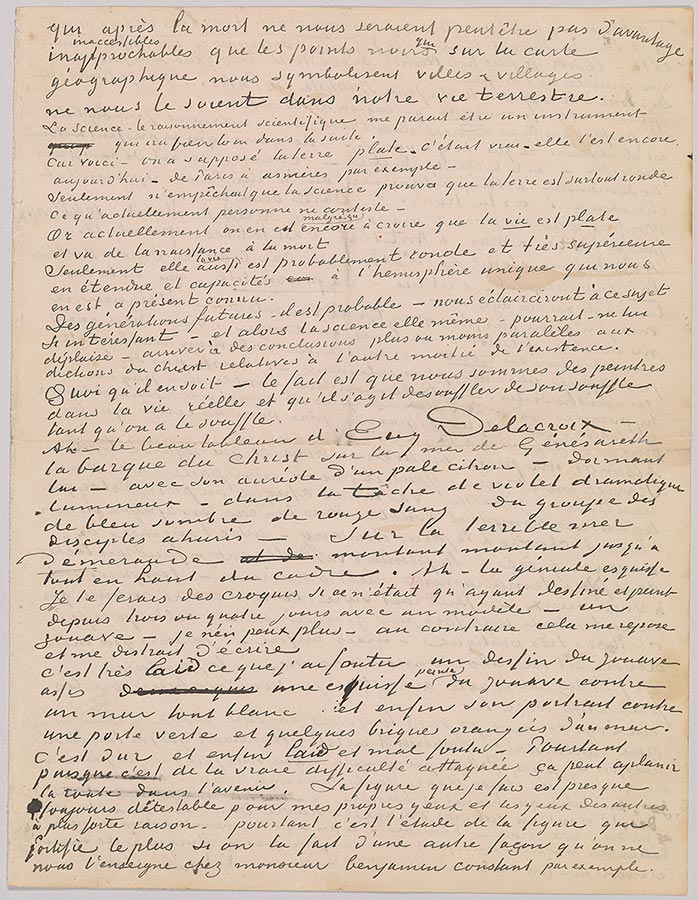
Vincent van Gogh, letter to Émile Bernard, Arles, 26 June 1888, Letter 8, page 3
Thaw Collection, given in honor of Charles E. Pierce, Jr., 2007
which, after death, would perhaps be no more unapproachable, inaccessible to us than the
black dots that symbolize towns and villages on the map in our earthly life. Science—scientific
reasoning—seems to me to be an instrument that will go a very long way in the future.
Because, look—it was thought that the earth was flat—that was true—it still is today—from
Paris to Asnières, for example.
But that didn't prevent science proving that the earth is above all round. Which nobody
disputes nowadays.
Now at present, despite that, we're still in the position of believing that life is flat and goes from
birth to death.
But life too is probably round, and far superior in extent and potentialities to the single hemisphere
that is known to us at present.
Future generations—probably—will enlighten us on this subject that is so interesting—and
then science itself—could—with all due respect—reach conclusions more or less parallel to Christ's
words concerning the other half of existence.
Whatever the case—the fact is that we are painters in real life, and it's a matter of breathing
one's breath as long as one has breath.
Ah—E. DELACROIX'S beautiful painting—Christ's boat on the sea of Gennesaret, he—with his
pale lemon halo—sleeping, luminous—within the dramatic violet, dark blue, blood-red patch of
the group of stunned disciples. On the terrifying emerald sea, rising, rising all the way up to the top
of the frame. Ah—the brilliant sketch.
I would make you some sketches were it not that having drawn and painted for three or four
days with a model—a Zouave—I'm exhausted—on the contrary, writing is restful and diverting.
What I've done is bloody ugly: a drawing of the Zouave, seated, a painted sketch of the Zouave
against an all-white wall and lastly his portrait against a green door and some orange bricks of a
wall. It's harsh and, well, ugly and badly done. However, since that's the real difficulty attacked, it
may smooth the way in the future. The figures that I do are almost always detestable in my own eyes,
and all the more so in others' eyes—nevertheless, it's the study of the figure that strengthens us the
most, if we do it in a different way than we're taught at Monsieur Benjamin Constant's, for example.
© 2007 Van Gogh Museum, Amsterdam
